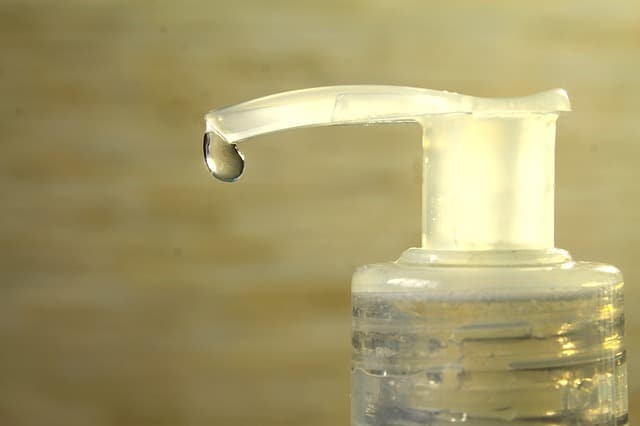
Breast milk has abundant lysozyme, a natural bactericide.
The adjective bactericidal is used to describe that which eliminates bacteria (single-celled microbes that lack a differentiated nucleus and that, depending on the species, cause diseases or are responsible for the decomposition of organic matter). The term can be used as a noun to refer to the product that has said capacity.
Destruction of bacteria
It can be said that a bactericide acts against bacteria like fungicides against fungi or insecticides against insects . However, it is important to differentiate between a bactericide and a bacteriostatic .
Bactericides destroy bacteria . Bacteriostatics, on the other hand, do not kill them, but rather make their proliferation impossible by interrupting their growth . Thus, bacteriostatics annul the reproduction of bacteria, while bactericides directly end their lives.
It can be said, therefore, that bactericides have an irreversible effect: once they are applied, if they are effective, they eliminate these microorganisms. As for bacteriostatics , they prevent bacteria from growing but remain alive.
Composition and antibiotics
Regarding the composition of the bactericides, they may contain organic or inorganic acids . These are usually volatile substances.
Among the antibiotics that are given to people, there are often bactericidal products. Aminoglycosides , glycopeptides and beta-lactams , for example, are bactericidal antibiotics used in the treatment of various infections .
Take the case of vancomycin . This glycopeptide antibiotic inhibits the synthesis of the cell wall of pneumococcus , staphylococcus aureus and other gram-positive bacteria that cause diseases , having a bactericidal effect.
Lysozyme
Also known as muramidase , lysozyme is a bactericidal substance found in saliva, mucus and tears, among other secretions of our body. Perhaps the most important example is breast milk, where it is especially abundant and is needed to protect the baby from potential bacterial attacks, which it could not combat on its own. It is an enzyme capable of damaging bacteria.
A large percentage of the bacteria that these enzymes attack are not pathogenic; In fact, the action of lysozyme is usually the reason that these organisms do not represent a danger to our health. In some cases, it can modify the cell wall of pathogens to transform them into protoplasts or spheroplasts, giving rise to what is known as L forms .
ethyl alcohol
One of the most popular bactericidal products, if not the most, is ethyl alcohol . Not only is it economical but it has many applications, from body care to home hygiene. Ethyl alcohol has a double function, as it is a disinfectant and antiseptic. When used to eliminate bacteria, its effectiveness is estimated at 99.99 percent , a more than promising number.

Ethyl alcohol is one of the most versatile bactericides
Before continuing, it is necessary to point out that this bactericidal product is not ideal in every situation . For example, since it is not capable of eliminating certain microorganisms or penetrating protein-rich materials, it is not recommended for sterilizing instruments used in surgery or medicine in general.
Its use for the skin, on the other hand, is effective and is where it becomes especially useful. In fact, currently we can get it in liquid format (the most common), but also in wet wipes and gel . This versatility in marketing has a direct impact on its popularity, because we can use it wherever we are, both at home and away, with great comfort and ensure that we keep our body hygienic at all times. Whether or not we can access a bathroom to wash our hands, for example, it never hurts to disinfect them with alcohol before eating or touching our face, for example.
